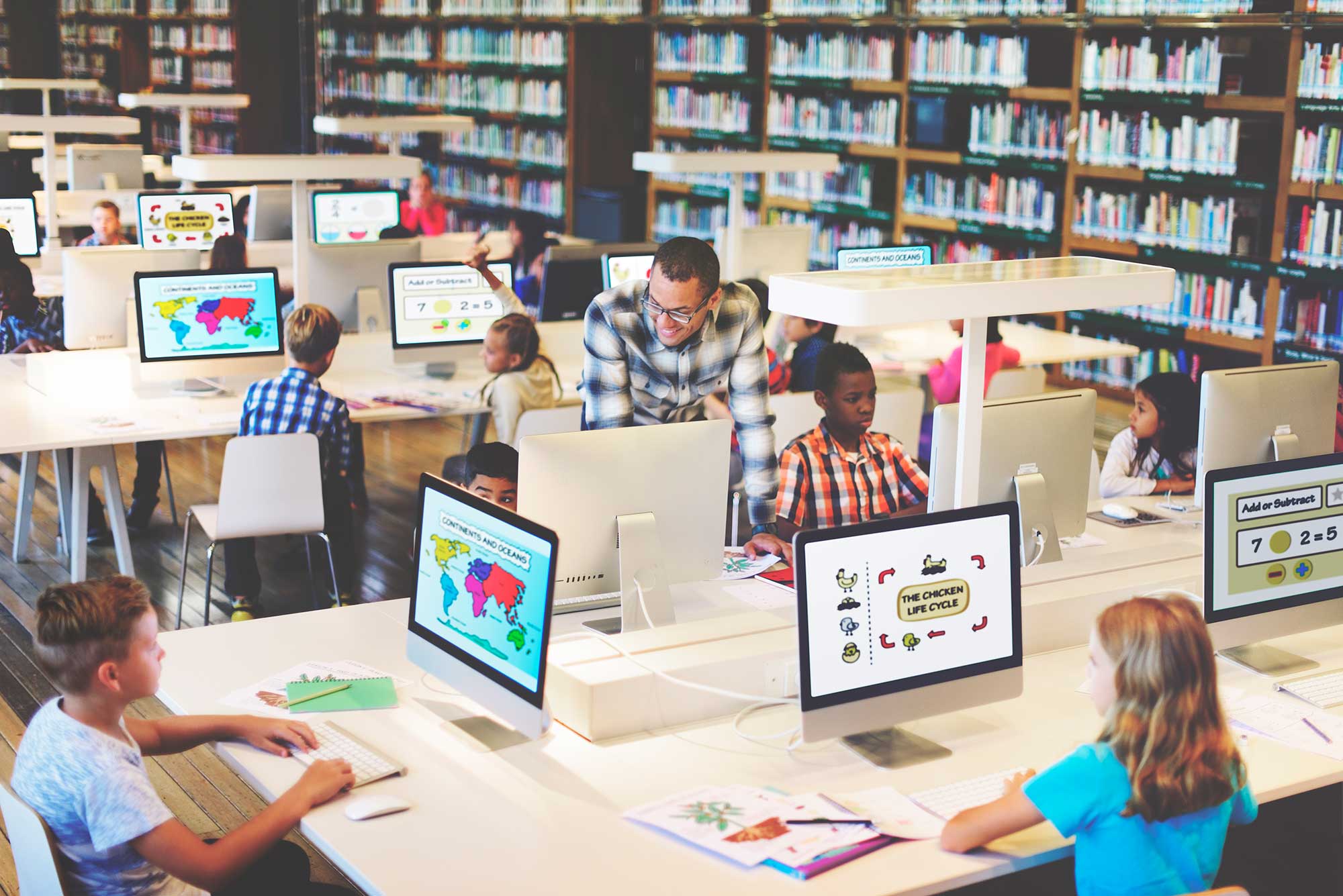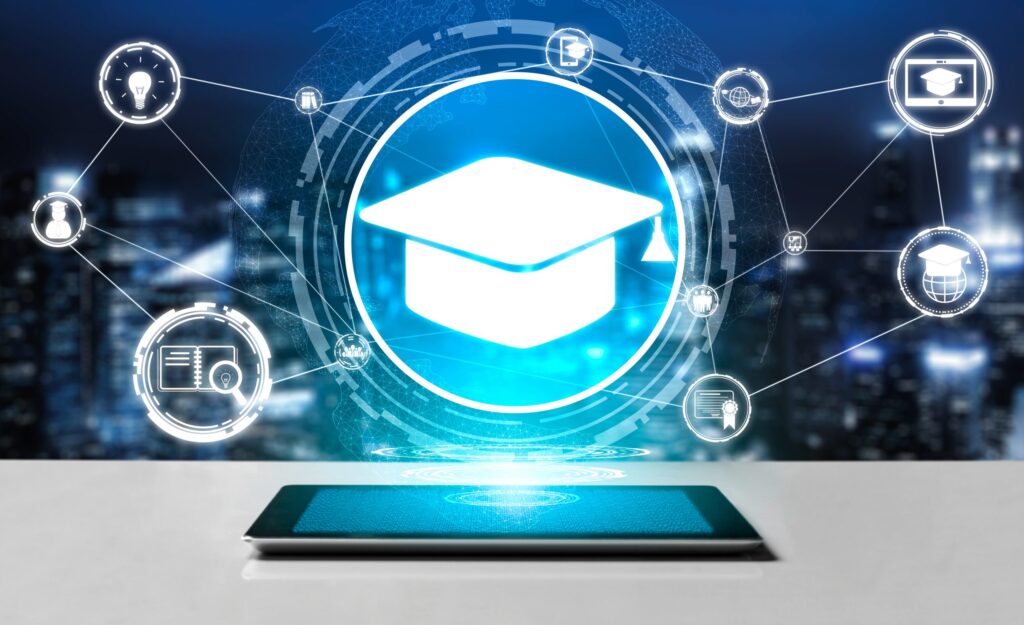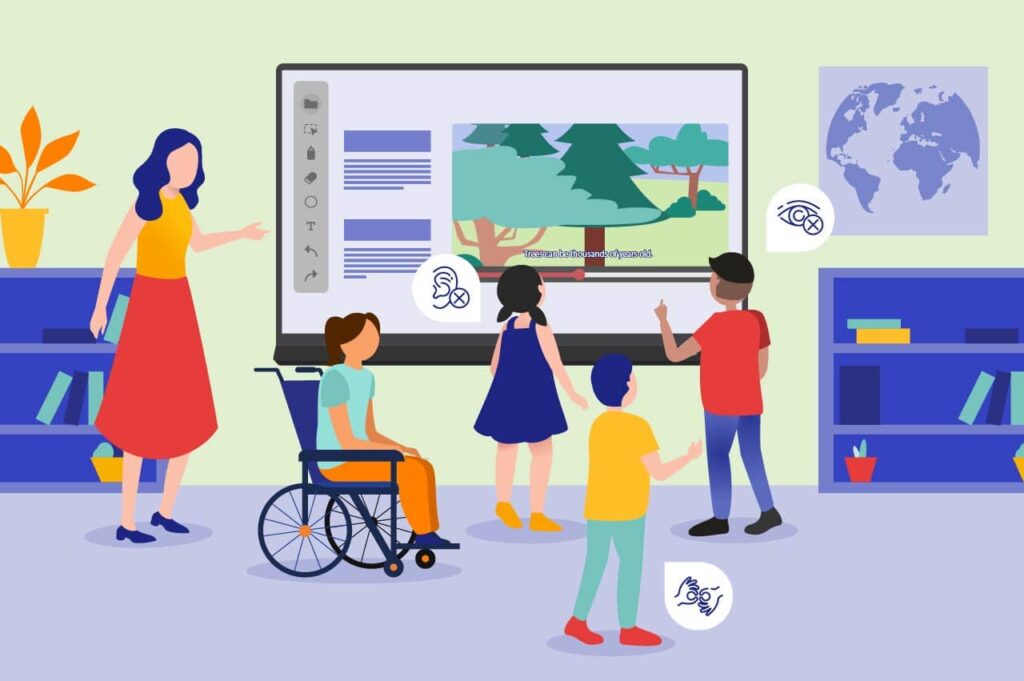
We offer a comprehensive curriculum developed by an international team, experienced teachers, and a focus on individualized and project-based learning.

We offer a comprehensive curriculum developed by an international team, experienced teachers, and a focus on individualized and project-based learning.

The world of education is in constant flux, with new technologies emerging all the time, promising to revolutionize how we teach and learn. But with innovation comes resistance, specifically in educational technology (edtech).
Objections to edtech are common, often stemming from concerns about cost, effectiveness, and the role of technology in the classroom. It’s crucial to address these concerns head-on, dispel myths, and highlight the incredible potential of educational technology to enhance the overall learning experience.
In this blog post, we’ll delve into the most common objections to edtech, exploring the reasons behind them and offering evidence-based counterarguments. Ready to move beyond the objections and embrace the future of learning? Let’s dive in!
One of the most common objections to edtech is the perceived high cost. Schools often operate on tight budgets, and investing in new technology can seem daunting. This includes not only the initial purchase of hardware and software but also the ongoing costs of maintenance, updates, and potential replacements.
It’s important to remember that viewing edtech solely as an expense misses the bigger picture. For example, digital textbooks and learning resources can be more affordable than traditional print materials.
Moreover, edtech can increase efficiency and productivity in the classroom. Automated grading tools, online assessments, and personalized learning platforms can free up teachers’ time, allowing them to focus on individual student needs and provide more targeted support.
While the initial investment in edtech can seem significant, there are ways to mitigate costs and maximize your return on investment. Explore funding opportunities such as grants, partnerships with edtech companies, and community fundraising initiatives.
When choosing edtech solutions, prioritize versatility and longevity. Look for platforms and tools that can be adapted across different grade levels and subject areas.
Don’t forget about open educational resources (OER). There’s a wealth of free, high-quality digital learning materials available online that can supplement your edtech tools and reduce costs.

Integrating technology effectively requires more than just purchasing the latest gadgets. Teachers need adequate training and ongoing support to confidently use edtech in their classrooms.
Effective professional development should go beyond simply learning how to operate the technology. It should focus on pedagogical strategies for integrating technology into the curriculum, differentiating instruction, and assessing student learning in a technology-rich environment.
Ongoing support is crucial. Provide teachers with access to mentors, coaches, and online communities where they can connect with their peers, share best practices, and troubleshoot challenges.
Creating a culture of technology integration requires a school-wide commitment. Administrators need to provide the necessary resources, time, and encouragement for teachers to embrace edtech.
Foster collaboration and peer learning. Encourage teachers to share their experiences, successes, and challenges with technology integration. Establish learning communities where teachers can observe each other’s classrooms, co-plan lessons, and provide feedback.
Invest in high-quality professional development that aligns with your school’s goals and curriculum. Look for programs that offer a blend of online and in-person learning, hands-on activities, and ongoing support.
One of the most prevalent objections to edtech, particularly from parents, is the concern about increased screen time. Excessive screen time has been linked to various health issues, including eye strain, sleep problems, and a sedentary lifestyle.
Not all screen time is created equal. Engaging in interactive, educational activities is different from passively watching videos or scrolling through social media.
When implemented thoughtfully, edtech can actually promote active learning and reduce sedentary behavior. For example, virtual reality field trips can allow students to explore different environments and engage in physical activities, while interactive simulations can encourage collaboration and problem-solving.
To alleviate screen time concerns, emphasize a balanced approach to technology use in the classroom. Establish clear guidelines for screen time limits and encourage breaks for physical activity and offline learning.
Integrate technology purposefully. Choose edtech tools that enhance learning experiences and promote active engagement, rather than simply replicating traditional teaching methods on a screen.
Communicate with parents about your technology integration strategies and address their concerns openly. Explain how you’re using edtech to support student learning and well-being.

Another common objection to edtech is skepticism about its effectiveness. Critics argue that technology is often used as a “shiny new toy” without any real evidence to support its impact on student learning.
It’s crucial to emphasize that technology is a tool, not a magic bullet. The effectiveness of edtech depends on how it’s implemented and integrated into the curriculum. Simply introducing technology into the classroom without a clear pedagogical purpose won’t yield positive results.
Research has shown that when used effectively, edtech can improve student engagement, motivation, and achievement. Personalized learning platforms, for example, can adapt to individual student needs, providing targeted instruction and support.
To demonstrate the effectiveness of edtech, it’s essential to collect and analyze data on student learning outcomes. Use assessments, both formative and summative, to track student progress and identify areas where technology is having a positive impact.
Share this data with stakeholders, including teachers, parents, and administrators. Transparency about the impact of edtech can help build trust and support for its continued use. Continuously evaluate and refine your edtech strategies.
While technology has the potential to bridge learning gaps, concerns about equity and access are valid objections to edtech. Not all students have equal access to technology and internet connectivity, particularly in underserved communities.
It’s crucial to address these disparities and ensure that all students have the opportunity to benefit from edtech, regardless of their background or socioeconomic status.
Schools need to invest in infrastructure and resources to provide equitable access to technology for all students. This includes providing devices, internet access, and technical support for both students and families.
Implementing initiatives to bridge the digital divide requires a multi-faceted approach. Partner with community organizations and businesses to provide internet access and devices for low-income families.
Offer digital literacy training for both students and parents. Ensure that everyone has the skills and knowledge to use technology effectively.
Create a supportive learning environment where all students feel comfortable using technology, regardless of their prior experience. Provide individualized support and differentiated instruction to meet diverse learning needs.

Equity in edtech also means ensuring that technology is accessible to all learners, including those with disabilities. Choose edtech tools that offer accessibility features such as text-to-speech, screen readers, and adjustable font sizes.
Provide individualized support for students with disabilities. Work with special education teachers and specialists to ensure that technology is used to enhance learning and meet individual needs.
Promote a culture of inclusion where all students feel valued and supported in their use of technology. Encourage collaboration and peer support to create a positive learning environment for everyone.
Artificial intelligence (AI) is rapidly transforming the educational landscape, offering exciting possibilities for personalized learning, automated feedback, and intelligent tutoring systems. However, the use of AI in education also raises concerns and objections.
Some worry that AI will replace teachers altogether, leading to job losses and a dehumanization of education. Others express concerns about data privacy and the ethical implications of using AI to track student progress and make decisions about their learning.
It’s important to address these concerns and clarify the role of AI in education. AI is not meant to replace teachers but rather to augment their capabilities and provide them with powerful tools to enhance their teaching practices.
Think of AI as a teacher’s assistant, providing support with tasks such as grading, providing personalized feedback, and identifying students who need extra help. This frees up teachers’ time to focus on what they do best: building relationships with students, fostering creativity, and providing individualized support.
Address data privacy concerns by being transparent about how student data is collected and used. Ensure that AI systems are used ethically and responsibly, with a focus on promoting student learning and well-being.
Emphasize the human element of education. While AI can provide valuable support, it cannot replace the crucial role of teachers in nurturing students’ social-emotional development and fostering a love of learning.

In today’s rapidly evolving world, technology is an essential tool for success. Preparing students for the future means equipping them with the digital literacy skills they need to thrive in a technology-driven society.
Objections to edtech sometimes stem from a fear of the unknown or a reluctance to embrace change. However, resisting technology integration can leave students unprepared for the challenges and opportunities of the 21st century.
Edtech can empower students to become active learners, critical thinkers, and problem-solvers. It can provide them with access to a wealth of information, connect them with global communities, and foster collaboration and creativity.
Integrating technology in the classroom also provides an opportunity to teach students about digital citizenship. Educate them about online safety, responsible technology use, and the ethical implications of technology in society.
Encourage students to use technology for creative expression, innovation, and problem-solving. Provide them with opportunities to explore coding, design, and digital storytelling.
By embracing edtech and preparing students for the future, we can empower them to become lifelong learners and successful contributors to the global community.
Addressing objections to edtech requires a collaborative approach. Engage in open and honest dialogue with teachers, parents, and students. Listen to their concerns, address their questions, and provide evidence-based information about the benefits of technology integration.
Build a shared vision for the future of learning. Emphasize the transformative potential of edtech to personalize learning, enhance engagement, and prepare students for success in the 21st century.
Celebrate successes and share best practices. Highlight examples of how technology is making a positive impact in your school and community. Inspire others by showcasing the power of edtech to transform learning.

One of the keys to successful edtech integration is investing in ongoing professional development for teachers. Technology is constantly evolving, and educators need continuous support to stay abreast of the latest tools, trends, and best practices.
Professional development should go beyond simply learning how to use specific software or hardware. It should focus on pedagogical strategies for integrating technology effectively into the curriculum, differentiating instruction, and assessing student learning in a technology-rich environment.
Provide teachers with opportunities to collaborate with their peers, share best practices, and learn from each other’s experiences. Encourage them to experiment with new technologies and explore innovative ways to use edtech in their classrooms.
Create a culture of continuous learning where teachers feel supported and encouraged to explore new technologies. Offer a variety of professional development opportunities, including workshops, online courses, mentoring programs, and peer-to-peer learning communities.
Provide dedicated time for teachers to engage in professional development and collaborate with their colleagues. Integrate technology into faculty meetings and professional learning communities to model effective integration strategies.
By investing in ongoing professional development, we can empower teachers to become confident and effective users of educational technology, ensuring that technology serves as a catalyst for innovation and student success.
As we reach the end of this exploration, it’s clear that while objections to edtech are understandable, they shouldn’t hinder progress. By addressing these concerns head-on and embracing the potential of technology, we can unlock incredible opportunities for students and educators alike.
Throughout this post, we’ve delved into the common objections to educational technology, from cost and effectiveness to screen time and equity. We’ve explored the reasons behind these concerns and offered evidence-based counterarguments and practical solutions.
Ultimately, the successful integration of edtech requires a collaborative approach, open communication, and a commitment to ongoing learning.

FutureClassroom is Southeast Asia's largest coding platform for K-12, empowering students with essential skills in Web Development, Game Development, Python, and AI. Aligned with Cambridge and Pearson standards, our platform combines interactive learning and real-world projects to prepare young learners for a future driven by technology.
View all posts
FutureClassroom is Southeast Asia's largest coding platform for K-12, empowering students with essential skills in Web Development, Game Development, Python, and AI. Aligned with Cambridge and Pearson standards, our platform combines interactive learning and real-world projects to prepare young learners for a future driven by technology.
Get all the latest information, support and guidance about the cost of living with kindergarten.
Start Registration